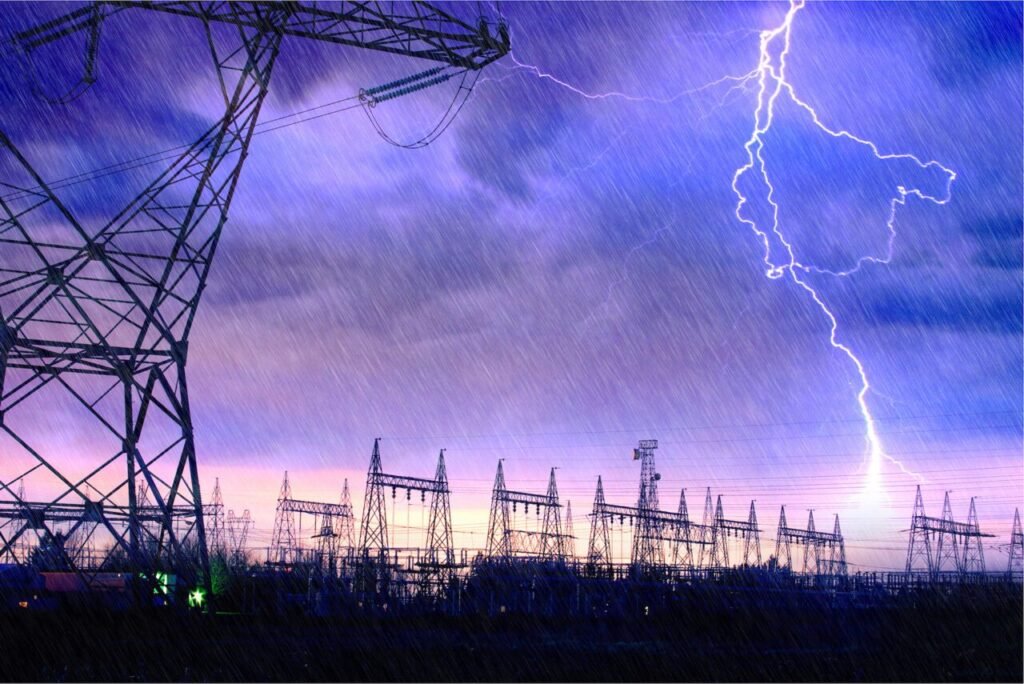As climate change accelerates, rising humidity is causing an increase in the number and severity of storms occurring in the northern hemisphere. An academic study found that the frequency of unstable atmospheric conditions increased by 8% to 32% over most land areas from 1979 to 2020. “Storm intensity is increasing much faster than the average change in precipitation,” said Aiguo Dai, a professor of atmospheric science and the study’s author. “And it’s the intensity that really matters, because that’s what we design our infrastructure to handle.”
Last year, 28 weather and climate disasters in the U.S. occurred that will cost at least $1 billion to address, surpassing the previous record of 22 set in 2020. Overall, last year’s incidents will cost at least $92.9 billion to recover from.
COMMENTARY
As a result, utilities are seeking fresh strategies to protect infrastructure and service reliability for this storm season and beyond. Utilities provide the power that enables businesses to maintain connectivity; houses to shelter residents; and critical services such as data center, healthcare, grocery, and manufacturing operations to continue unabated.
Artificial intelligence (AI)-driven solutions can help utility decision-makers and crews enhance their preparedness; allocate resources appropriately; and quickly respond to issues before, during, and after a storm. By doing so, utility chief information officers can help ensure a resilient power supply, reduce operational costs, improve operational efficiencies and safeguard assets and communities.
Before the Storm: Proactively Identifying and Mitigating Risks
Utilities have a vast amount of data from historical records, weather stations, sensors, and drones they can leverage to predict when severe weather might strike and what damage it might create. They can use AI solutions to process historical data and real-time inputs to gain timely, prioritized and actionable insights. For example, utilities can harness drones, paired with visual AI, to map structures and assets, identify vulnerable infrastructure, and prioritize maintenance before storms hit. AI solutions scan visual imagery, such as electricity cables, pylons, and substations, identifying broken parts and rust that crews should address.
AI solutions can also help utility leaders deploy resources, such as repair crews and equipment, to areas most likely affected by storms, saving valuable man-hours in critical power restoration situations.
PG&E manages thousands of miles of transmission lines in high-fire-threat districts. The utility reduces fire risks by proactively trimming vegetation so it doesn’t touch lines. Historically, the utility dispatched arborist teams to review lines for vegetation encroachment, which costs up to $800 a mile just for inspections. Now, PG&E relies on digital twin technology for these inspections. These virtual models use geological, ecological, and meteorological data and machine learning algorithms to identify both near-term and long-term risks, such as dry vegetation and high winds or areas progressively warming due to climate change impacts.
With AI-powered insights, PG&E can deploy teams where needed to prune back vegetation from transmission lines, reducing the risk they could help spark a wildfire.
During the Storm: Planning Load Distribution and Future Work
During storms, AI solutions continuously monitor grid operations, searching for anomalies indicating overheating thermal equipment, power overloads, and outage length. This information helps leaders decide how to protect systems and customers’ critical operations. For example, advanced distribution management systems incorporate customers’ distributed energy resources, smoothing out demand spikes and redistributing loads effectively after a significant outage.
Duke Energy Florida’s smart, self-healing technology helped the utility navigate Hurricane Ian in 2022 and its aftermath. The technology automatically restored over 160,000 customer outages, saving nearly 3.3 million hours of lost outage time.
After the Storm: Recovering from Severe Incidents
Recovery from storms begins while the storm is in progress. Utilities use drones to assess damage rapidly and plan work without putting ground crews at risk. Then, after the storm ends, drones enable crews to identify high-risk areas and triage support there.
Three days after Hurricane Ian left the state, Duke Energy Florida had restored power to one million customers. With such fast progress, the utility was able to loan 550 workers and additional contractors to help restore power for Lee County Electric Cooperative customers.
Duke Energy’s success with self-healing technology is driving future investments. Currently, around 59% of customers benefit from AI-driven restoration services. However, in the future more than 80% will.
Hardening Infrastructure and Operations to Address Growing Storm Impacts
As storms grow in number and intensity, utilities must evolve their planning and response capabilities. AI-enabled solutions enable leaders and teams to continually detect and remediate outage and fire risks and equipment issues before, during, and after storms. By doing so, utility teams can deliver an exceptional customer experience while protecting personnel and equipment from harm. And while grateful customers may have no idea that AI helps keep the lights, air conditioning or heat, and internet on, they’ll welcome the ability to comfortably ride out a storm in their home or business venue.
—Kaitlyn Albertoli is CEO and co-founder of Buzz Solutions.

